The best Shopify stores for inspiration: lessons for success
When starting an eCommerce business, or you’re adding an eCommerce venture to an existing business, most people want to be able to concentrate on sourcing the right products, and getting on with marketing those products so they can start making sales quickly. Most businesspeople don’t have the technical skills required to build an eCommerce website – which is how Shopify came about. The founders of Shopify were trying to create an online business selling snowboarding equipment, but found that it was much harder than it should have been, and needed to be to create an eCommerce website. With that a-ha moment, they set up Shopify – with the aim of making it simpler to create a website and start selling.
In this post we’ll be taking a look at what Shopify is, and which brand names use the Shopify platform, throw some statistics at you (just in case you wanted a bit more proof of how great Shopify is!) before we take a look at some great Shopify websites. There are plenty of other great examples – we only had a single blog post to write about them, after all! As we look at each website, we’ll look at key takeaways from each website, so that you can identify the useful features, before we look at how you can get started with your own Shopify store – even if you don’t have anything to sell yet.
What is Shopify?
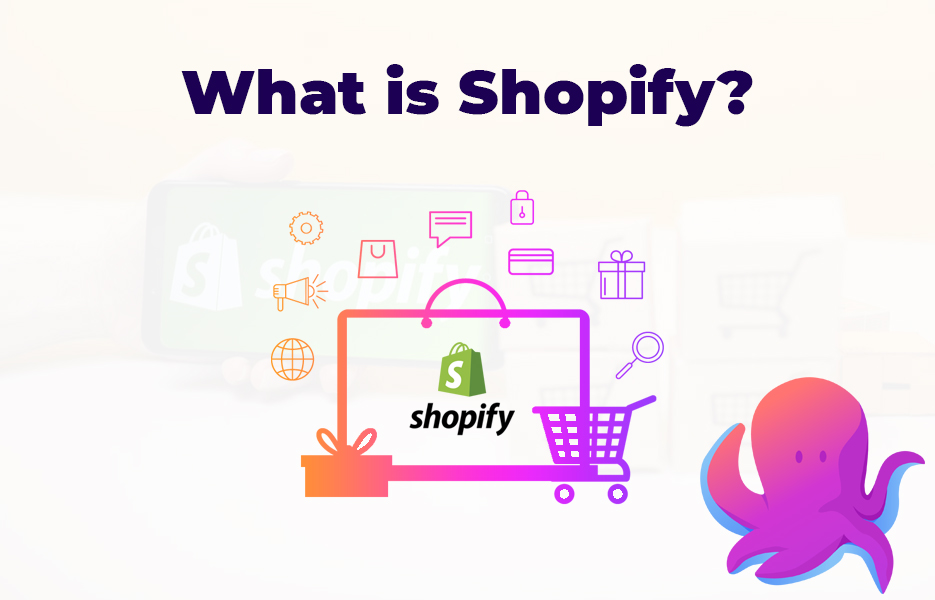
Shopify provides a proprietary platform that makes it easy to set up an online store and start selling. Shopify provides everything from domain names to adding payment functionality, and because it’s so easy to get set up and selling, it is now one of the most popular eCommerce platforms.
It can take less than an hour to create your Shopify website. All Shopify websites shopping carts have 128 bit SSL certificates, so you don’t need to worry about keeping information secure, because it already is – and there are plenty of apps and addons in the Shopify app store that provide extensive functionality with no technical knowledge required.
With how simple it is to set up, it’s no surprise that sellers have set up Shopify stores to sell to customers all over the world. There are customers in over 175 countries, which is almost everywhere on the planet, but China, the US, and France place the most orders on Shopify.
Shopify statistics
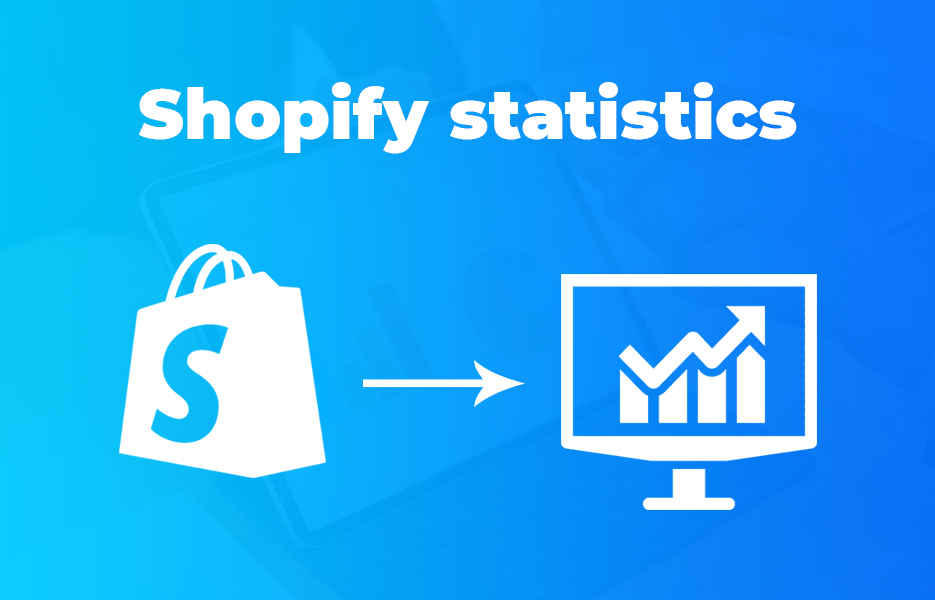
Shopify has over 1 million sellers using the platform
Sellers from 175 countries use Shopify to power their eCommerce websites
The number of active Shopify stores in excess of 500,000
Over 5300 Shopify stores subscribe to Shopify Plus – the enterprise level version of Shopify
87% of Shopify stores use apps to increase the functionality of their website
There are more than 2400 apps available in the Shopify app store
More than 25.8 million apps have been installed on Shopify stores
Approximately $100 billion of sales worldwide have been made through the Shopify platform to date
Which businesses are already using Shopify?
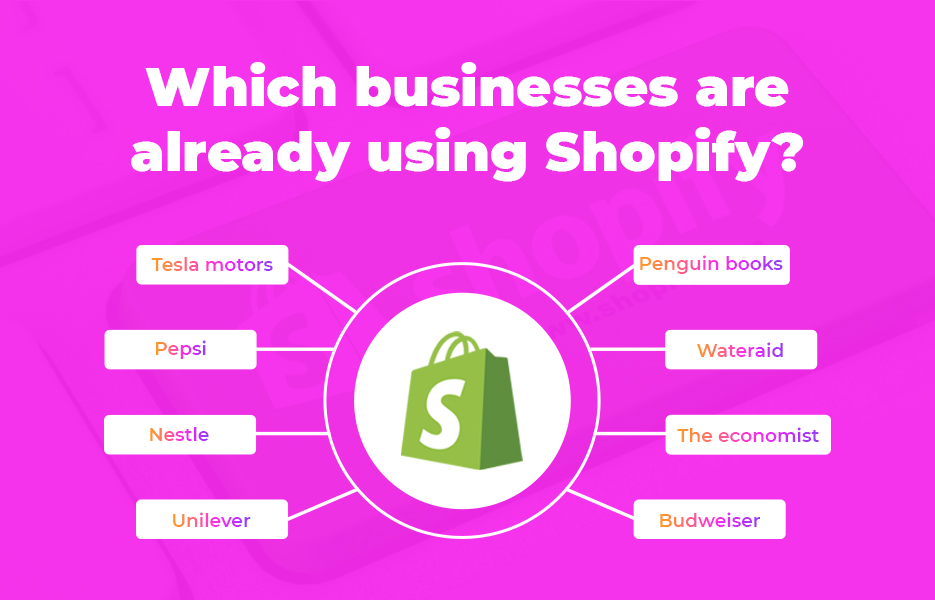
Shopify customers that you will almost certainly have heard of include major brands like Nestle, Pepsi, Unilever, Budweiser, The Economist, WaterAid, Penguin Books, Tesla Motors, and Red Bull. If we’re talking about Shopify Plus – the enterprise version – then brand names you’ll recognise include Heinz, Lindt and Victoria Beckham Beauty.
Although big brand names love Shopify, sole traders and new eCommerce businesses love Shopify too, simply because of how easy it is to set up and start trading – which was the aim of the platform all along.
Shopify timeline
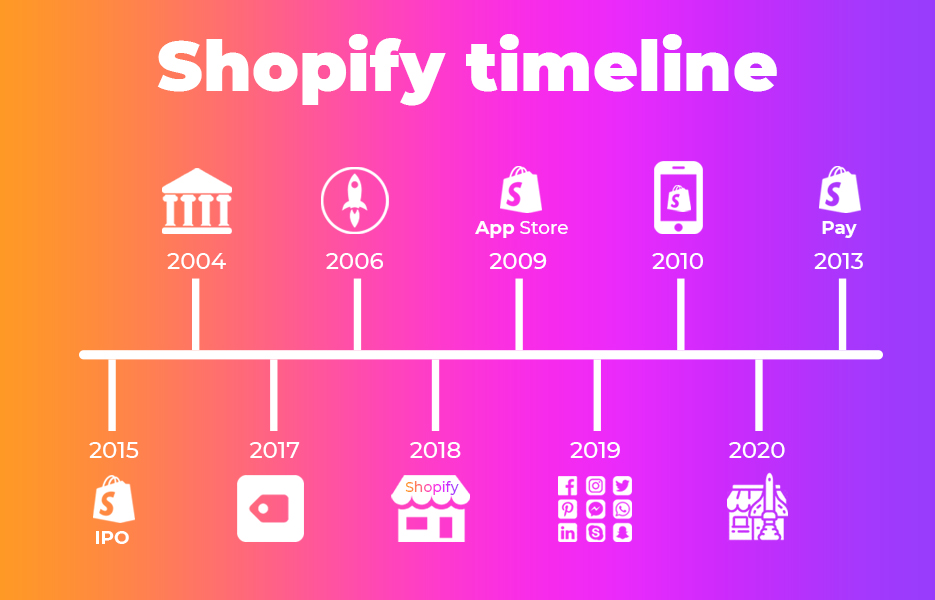
2004 – Shopify is established by Tobias Lütke, Daniel Weinand, and Scott Lake
2006 – Shopify is launched in June
2009 – Shopify creates an API platform and App store
2010 – Shopify’s free mobile app is launched
2013 – Shopify Payments is announced
2015 – Shopify files for an IPO on the New York Stock Exchange, finally going public on May 21st
2017 – Shopify acquires Oberlo
2018 – Shopify opens their first physical space for training and workshops
2019 – Shopify announces an integration with Snapchat allowing sales on the social media platform
2020 – Shopify announces the launch of Shop, a personal shopping assistant
2022 – Shopify announces the closure of Oberlo
Our 9 favourite Shopify stores
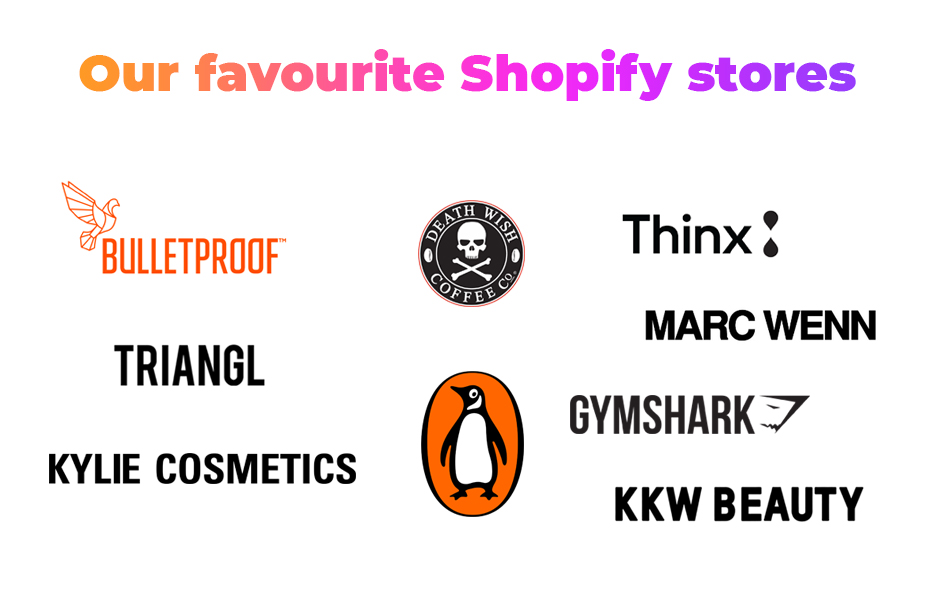
Like we already said – these aren’t the only Shopify stores that are fantastic – but we’ve only got a short blog post to fit this into!
Bulletproof
Bulletproof started with an idea formed at a critical point on a trek in Tibet, where founder Dave Asprey realised that the right combination of nutrition is essential for health and wellbeing. Since that time, he’s studied scientific research, which helped him lose 100 pounds and transform his life.
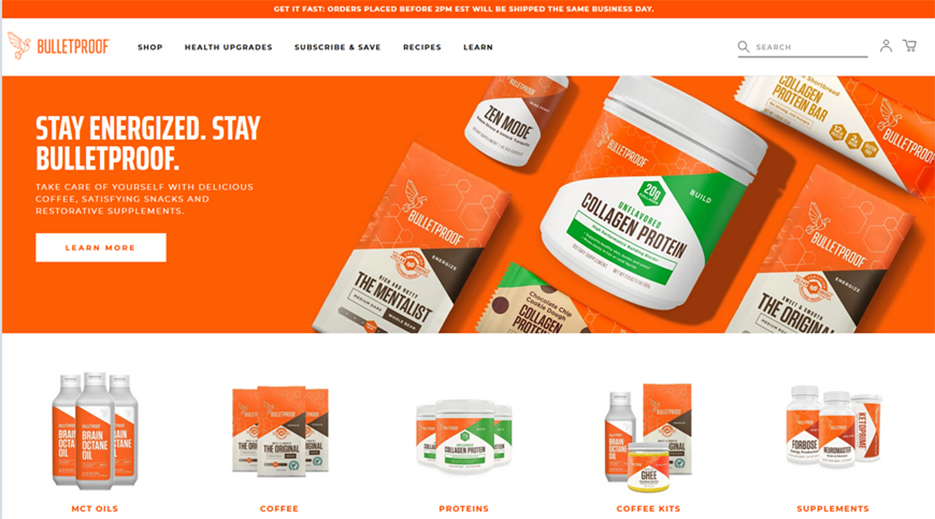
Bulletproof’s Shopify site has a minimalist design that capitalises on the use of the colour orange (that has plenty of positive connotations, including optimism – if you want to know more about the psychology of colour, check out the blog post we wrote about it here!), Bulletproof sells high quality coffee and health food alongside food supplements. Considering people want food supplements regularly, they’ve sensibly added in a subscription option – which is convenient for their customers, and keeps customers from being tempted to try other brands when they run out!
Their branding and product design is perfect for the Instagram generation – and there are thousands of posts on Instagram with hashtags related to Bulletproof! It’s pretty clear that Bulletproof have really thought out their content marketing strategy too – their blog provides plenty of information about how to improve your health, and is formatted in such a way that it is ideal for sharing.
Clever use of language (‘health upgrades’, for example, holds great appeal to millennials, and the younger generation, who are used to upgrading their technology and other parts of their life!) combined with their on-point branding has all added up to an incredibly valuable business – the business generates more than $100 million in revenue.
What to take away from Bulletproof:
High quality products, combined with the right language and minimalist yet stylish design are a great place to start your business, but investing in your content marketing will keep your customers invested in your brand, and keep them coming back for more. Customers who purchase Bulletproof coffee are likely to return to them to find a recipe, and spending time on the website will entice them to make further purchases. Getting visitors to your website is the first step to getting them to purchase, so giving them a reason to return to your website means they’re more likely to think of you when they’re making future purchases. Not only that, your content marketing can significantly help you increase the reach of your brand, since people are more likely to share a piece of your content, which exposes your brand to potential new customers.
If you are selling items that customers know they will want to buy on a regular basis, encourage them to continue to buy from you by adding in subscription functionality to your Shopify site.
Triangl
Triangl started as a result of a trip to the beach where founder Erin Deering struggled to find a bikini to wear that cost less than $200. She and her partner moved from Australia to Hong Kong (where their supply chain is) to pursue their dream. They designed swimwear, but found their savings quickly dwindled to just $500. They borrowed some cash from friends, and changed their business model – rather than selling wholesale, they sold exclusively through their Shopify website.

With pretty much no marketing budget, they relied heavily on social media growth for their brand – their 2.4 million followers on Instagram are clearly heavily influenced by their gorgeous feed. Sending their bikinis to celebrities didn’t hurt either – influencer marketing at it’s finest – Beyonce, Miley Cyrus and Kendall Jenner have all posted photos of themselves wearing Triangl bikinis.
Today the Triangl Shopify website is full of gorgeous girls wearing their bikinis and having fun – and although the girls are models, the images are the sort of scenes that most young women could picture themselves in. Like many of the other websites that we’re looking at in this post, the Triangl website uses minimalist design and branding. Their product listings are well spaced out, and to see the product on the model, you simply roll your mouse over the image. There are simple and effective filtering options, and as you would expect from a Shopify website, it’s easy to complete a purchase.
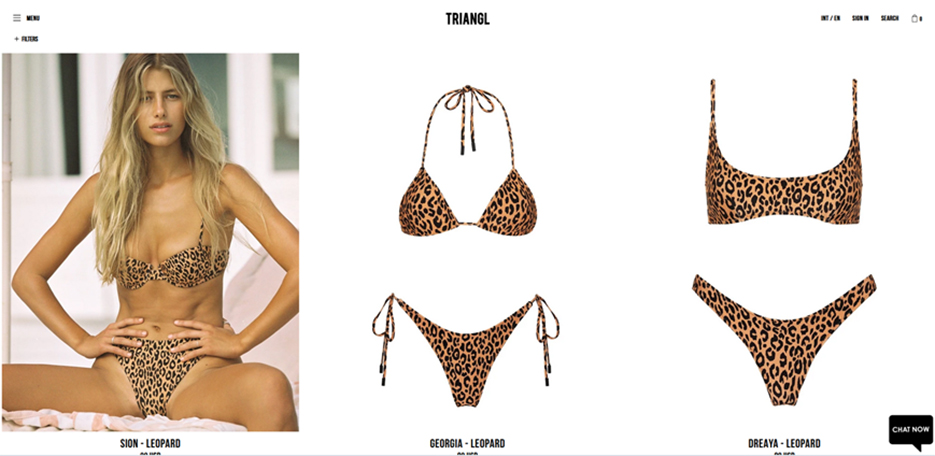
What to take away from Triangl:
Your products need to be attractive and high quality, and at the right price point, and of course your Shopify website needs to showcase them in a perfectly uncluttered way. But there are two key takeaways from the Triangl story.
Firstly, you don’t need a lot of money in your marketing budget – just like Triangl, your social media campaigns can be really low cost, as long as you attack them well.
Secondly, although you can potentially reach a lot of customers by selling across more platforms (multichannel selling) by solely selling on your Shopify website you might be able to increase the impression of exclusivity. Think about it – you can’t buy Chanel clothing on Amazon, nor on their website – you have to visit their boutiques, which is part of the experience. If you want your customers to find their way to your website though, you’ll need to have that strong marketing strategy – just because you build it, doesn’t mean that customers will come, after all!
Thinx
Thinx is a brand that provides period underwear – the type of knickers that can be used as an alternative to traditional sanitary towels and tampons. It’s a revolutionary idea, and if you’ve ever experienced a period (or supported someone in your life with their first period, a painful period, or that just needs a better way to deal with their periods!) then you’ll know that tampons and sanitary towels just aren’t always the finest answer – and that’s before we get to the environmental impact of all those disposable sanitary items.
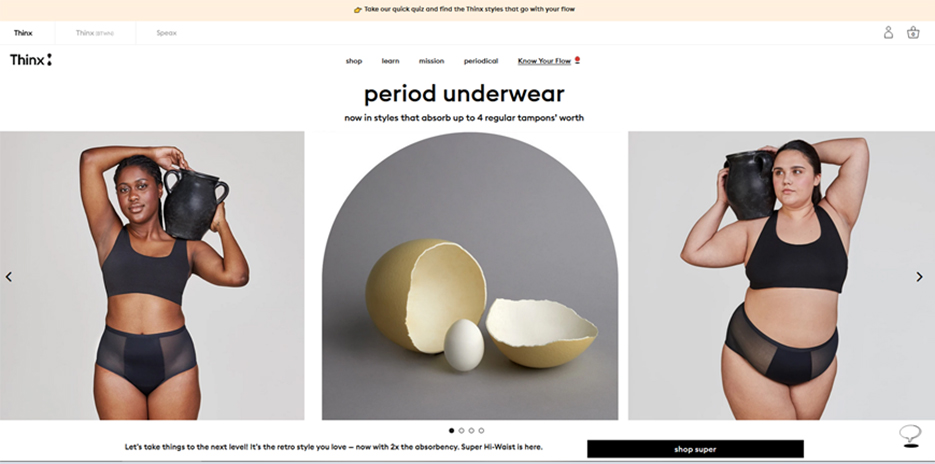
More than 100 million girls worldwide miss school every year because of period poverty, Thinx are also out to smash the taboo around periods – so they have gone to town on their content marketing. Their blog, their FAQs – they’re all chock-full of the answers to the sort of questions people just want to know the answer to.
Just like the majority of our other favourite Shopify websites, the Thinx website is incredibly simple. With a product this revolutionary, you don’t want flashy website design to outshine what you’re selling. Keeping the focus on your product, and the reasons why customers would want your product, is likely to be the best approach for this type of website – and Thinx are a great example of this.
It doesn’t stop there though. Thinx have combined their Shopify with a really effective social media strategy. Their Instagram content is full of women of all shapes, sizes and ethnicities in highly relatable settings – pets and children included! They also have plenty of graphics that are educational, and funny – with the odd chocolate chip cookie recipe thrown in, which as many of us know, is a complete necessity for periods!
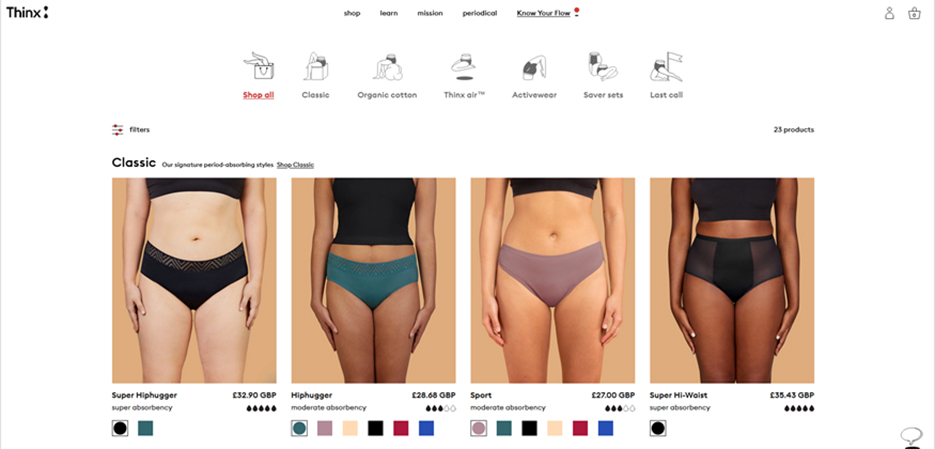
What to take away from Thinx:
The main thing that Thinx is trying to achieve is to help solve a problem that a LOT of people have. Periods can be uncomfortable, painful, embarrassing, amongst plenty of other headaches – both literal and figurative! Not only are Thinx trying to make life better during periods, they’re on a mission to help lower the environmental impact of periods by providing a product to replace traditional period wear. It’s an absolutely win-win product, and their Shopify website, and their social media are getting the message across.
The takeaway from Thinx then, is that if you have an idea for a product, and it solves two issues – especially if one of them is to positively impact on the environment – then you’re onto a potential winning product, and the simplicity of a Shopify website is exactly what you are likely to need in order to be able to concentrate on your marketing.
Gymshark
Gymshark was launched in 2012 by teenagers doing screen printing in a garage – further proof that you don’t have to be a business expert to launch a business and succeed using Shopify! Today they are one of the biggest names in sportswear that are targeted at younger consumers, and they both manufacture and sell fitness clothing and accessories.
The website branding is aspirational yet achievable for their target market, because it is reasonably affordable too – it’s easy to imagine yourself wearing some, if not all of the items on the website. Their Shopify website is the only place they sell their products, and for good reason – like Triangl, they want you to get the whole Gymshark experience. The Gymshark blog is a cracking example of how you can use blog content to engage with your audience, containing a combination of fitness advice, guidance of the new collections and trends, and lifestyle advice, including recipes and working from home advice.
Everything that Gymshark are doing is clearly working well for them, since the company is now turning over in excess of £200m each year.
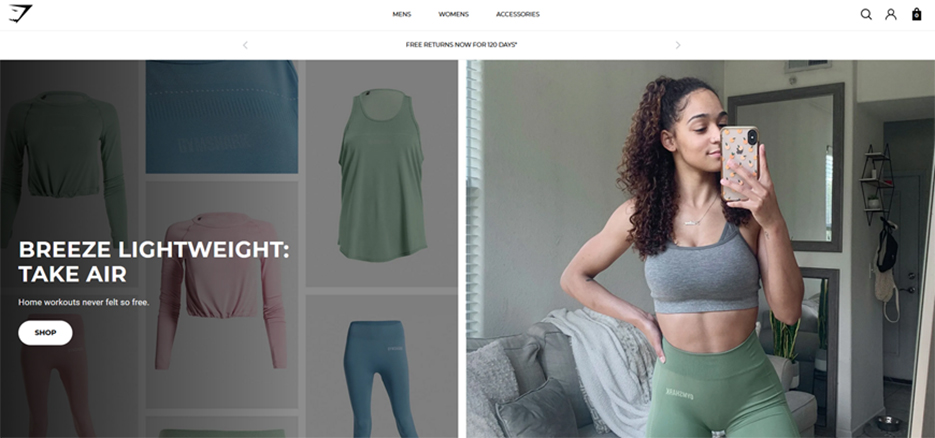
As a budding seller, you might not be quite ready to create your own line of clothing (although if you are, you might want to take a few minutes to read our post about how to find a clothing manufacturer!) but there are plenty of opportunities to create your own fashion, or sportswear line using DropShipping. Adding products from Avasam to your Shopify store means that your customers will receive their orders faster than if you source them from China via AliExpress, because they are already in-country. Fill your Shopify store with a free Avasam account and you can be selling immediately!
What to take away from Gymshark:
Even young people with little experience can create their own sportswear line with the right products. If you’re not in the position to create your own designs yet, there’s the potential to create a successful business with products sent directly from suppliers to customers using DropShopping. As with all businesses, adding content such as how-to and blog content will mean that customers will buy into the brand even further, and bring them back for future purchases.
Kylie Cosmetics
Kylie Jenner is the youngest child of Kris Jenner and Caitlyn Jenner, and came to the attention of the media when the family started filming Keeping Up With The Kardashians. At 22, she’s currently the world’s youngest billionaire, although undoubtedly it was probably easier for someone in her position to become so!
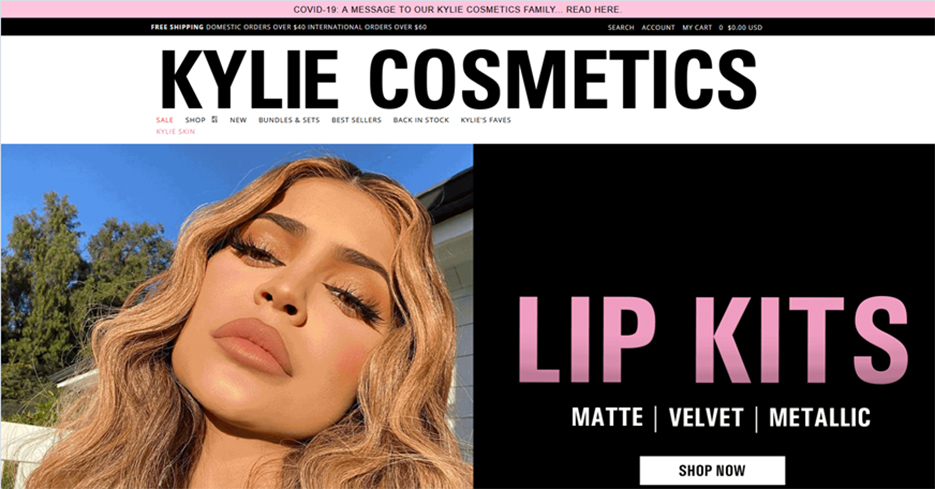
After creating a clothing line with her sister Kendall and Topshop in 2015, Kylie decided to move into cosmetics and skincare, launching her famous Kylie ‘Lip Kit’. From there, her cosmetics line has grown incredibly quickly, and now has a full range of ‘color cosmetics’. The website’s design is pretty modern, with a combination of black, white and pink that feels ultra-feminine but also minimalist in the best possible way, with of course – plenty of close-ups of Kylie modelling her products.
Kylie Cosmetics features plenty of flash sales, and when new products are announced, they often sell out in minutes, but yet it is rare to find the website down – testament to the infrastructure that Shopify provides!
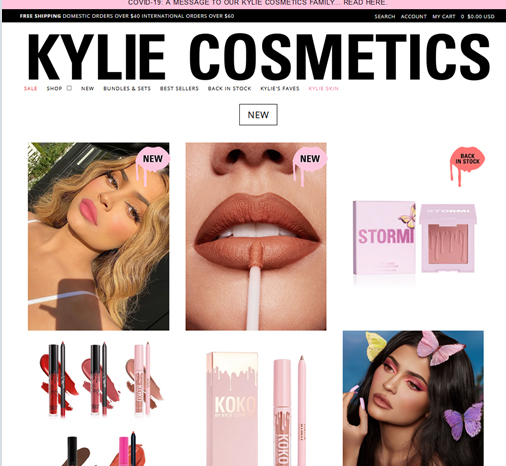
What to take away from Kylie Cosmetics:
Considering that Kylie was just 18 when she launched her lip kits, it’s pretty clear that you don’t need industry experience to make a success of your Shopify store – although for those who are able to employ experts in the field, as well as business in general, it is a lot easier. You simply need great products, and fantastic social media skills to get your business off the ground.
Death Wish Coffee
Born out of a small New York coffee shop, founder Mike Brown identified a need for a super-strength caffeine hit that also tasted great. Unlike some of the other websites on the list, the Death Wish branding is a little more interesting – they’ve combined their unique name with a skull and crossbones logo, implying that their coffee is so strong you might only want to drink it if you have – you guessed it – a death wish. Not only do they sell coffee beans though, they also have cold-brew in cans, and they’ve engaged customers into the brand with merchandise including an on the go coffee stash, flasks, mugs and clothing.
Death Wish have made it super-easy to be sure you’ll never run out of coffee, since they’ve provided a subscription option on their website too, as well as ‘DW Stash Cash’ – their customer loyalty scheme that allows customers to earn rewards for shopping with them, for social media likes and follows, and for celebrating birthdays as a member. This is really easy functionality to add with Shopify, and there are plenty of apps that can help you to add your own customer loyalty scheme that doesn’t have to cost you the Earth.
It’s also worth checking out Death Wish Coffee’s investment in their content marketing – just a few examples:
- Their weekly email newsletter ‘The Scoop’ has over 100,000 subscribers.
- They also have a weekly podcast ‘Fueled by Death’ that can be downloaded from all the usual podcast download places.
- Their blog is full of posts of things that might concern coffee drinkers and the target customer for the Death Wish brand, including recipes that include coffee, how coffee can be a great pre-workout drink and what Fair Trade means when it comes to coffee.
Their social media game is strong (like their coffee!) and the Death Wish brand is now so successful that in 2018 they sent a blend of freeze-dried coffee to the International Space Station!
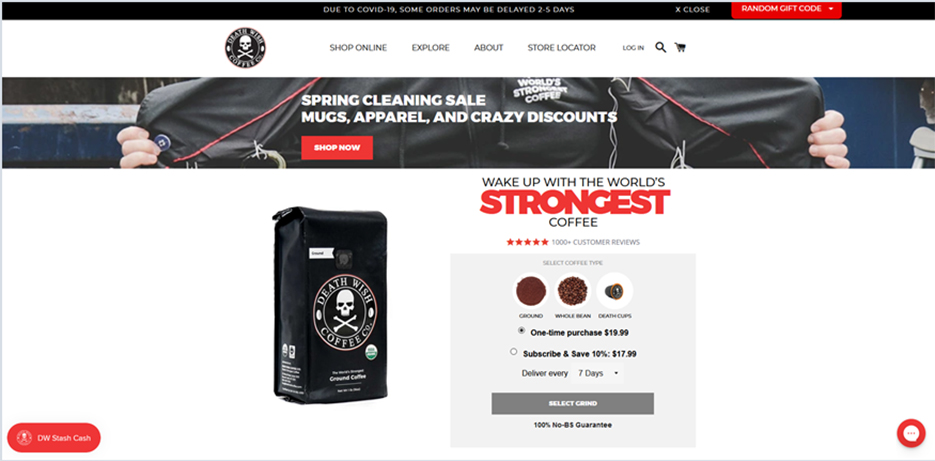
Death Wish Coffee have employed a multichannel approach to their sales – in addition to being able to buy from their Shopify store, you can buy from Amazon, eBay and Walmart. In store across the US, they’ve made it available in supermarkets too – and we have no doubt that they have plans to expand their reach into stores worldwide.
What to take away from Death Wish Coffee:
Death Wish Coffee’s name and branding could be thought of by some as a bit controversial. But they’ve made it work, by getting their customers to buy into the brand. The main thing they sell is their coffee, but they’re getting people to buy merchandise – which helps them market the brand even further! You can do the same by adding print on demand items to your Shopify store. In addition to your social media marketing, adding content marketing to your strategy will help you to up your game significantly – the key is to make it relevant to your target customers.
KKW Beauty
Older sister to Kylie, Kim Kardashian West launched KKW Beauty in 2017, after plenty of time filming Keeping Up With The Kardashians. Starting with just one featured product – her crème contouring kits sold out within two hours, the line has expanded quickly. Kim stated that after 10 years of getting her makeup done every day, she was able to put that knowledge into action. Kim started KKW Beauty after younger sister Kylie Jenner (who we just spoke about!) launched her business – just in case you were wondering which came first!
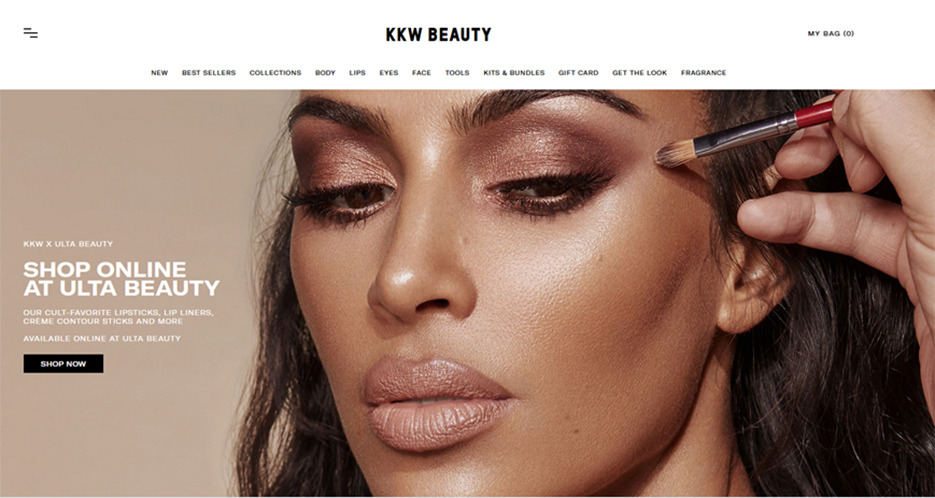
Like Kylie Cosmetics, overheads are pretty small – all marketing is done with minimal cost on her social media accounts, where Kim has over 205 million followers. Products for her store are outsourced to Seed Beauty, a private-label producer (which also handles the creation of Kylie Cosmetics) and all of the KKW sales go through Shopify – which are minimal too.
KKW Beauty products are now being sold in store and online at the US beauty chain Ulta, but most sales are made through the KKW Beauty Shopify website, of course with international shipping applied for outside the US.
What to take away from KKW Beauty:
Your overheads don’t have to be big when you’re creating a business. Although Kim would have been in the fortunate position to be able to pay for her first products from Seed Beauty, you can create your business by working with DropShipping suppliers. The beauty of DropShipping is that you don’t pay for anything upfront – you simply place the order with your supplier when customers place the order, and then your supplier sends the order directly to the customer. Combining DropShipping with a Shopify website and a strong social media presence, you can create a business with very few overheads up front. If you get to work quickly and fill your Shopify website immediately with products from Avasam, you might even be able to make your first sales before your first Shopify subscription payment is due. That means with the right strategy, you might never need to put any of your own cash into the business.
Marc Wenn
The Marc Wenn brand was founded in London in 2014 with the idea that men who don’t want to pay outrageous amounts of money for simple, great quality items shouldn’t have to. Their Chelsea boots and handmade leather backpacks are excellent quality, at incredibly reasonable prices for the standard of workmanship.
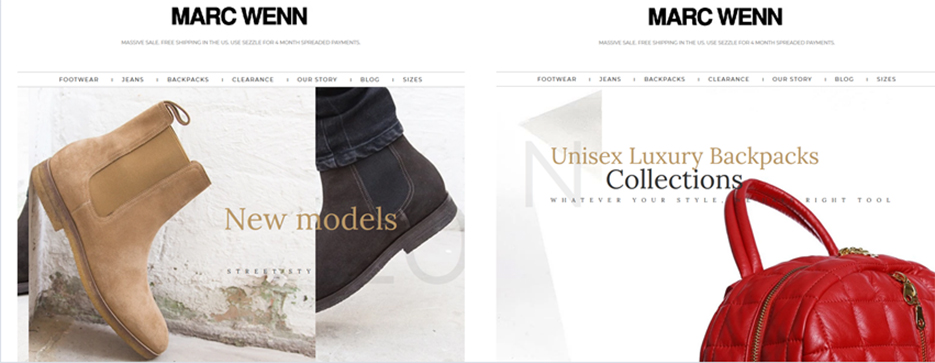
The first thing you’ll notice about the Marc Wenn store is that there aren’t a lot of products on the store – because the emphasis of the brand is on quality over quantity. There are just a handful of products in each category, each with keen attention to detail.
There’s a focus on high resolution images on a slide banner at the top of most pages, and they’re all simple, clear and minimalist. There’s lots of white on the website – which keeps the pages looking clear and high-end.
What to take away from Marc Wenn:
You don’t need to pack your store full of anything and everything to make it a success. If you can access and sell high quality products at the right price, and a great social media strategy, your business can take off with an incredible small range of items.
Penguin Books
The Penguin book shop is probably the biggest and longest established brand on our list. But their eCommerce website is built wholly with Shopify – and we love it! It has retained the well known and loved Penguin branding, using their well-recognised (and loved) orange and charcoal colour scheme.
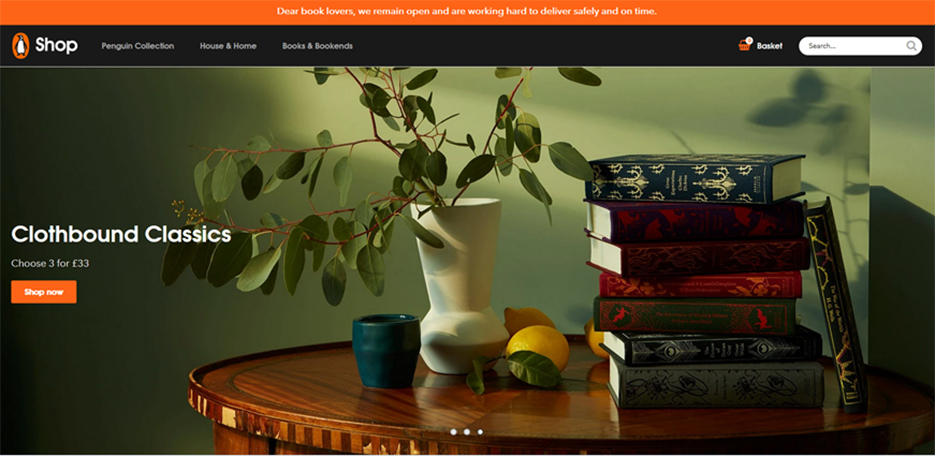
That orange and charcoal colour scheme is so successful that a huge number of products on the website that aren’t even books – their range of merchandise encompasses all kinds of stationery, as well as mugs, tea towels and art prints.
What we love about the Penguin book shop is its simplicity. The target customer for Penguin books are well educated, people that are probably middle class or above. Their images are made up of the kind of scenes that you would expect to see in well to do, middle class homes across the UK – which makes it easy for customers to imagine how great those products in their homes too.
Penguin books have always had a multichannel approach – the brand was set up in the 1930s, after founder Sir Allen Lane found himself at a railway station without anything to read. The brand revolutionised publishing, and sold inexpensive paperbacks in lots of different high street stores – and today, it is just the same. Penguin titles can be found on plenty of different marketplaces, in stores and of course, on their Shopify website.
There aren’t any loyalty features or blog on the Penguin book shop website – the blog is on the main Penguin website – but there are lessons to be taken from Penguin’s content marketing, so if you’re planning on adding a blog to your Shopify site, it’s well worth having a look.
What to take away from the Penguin book shop:
The same old plain, minimalist branding that we’ve seen on so many other Shopify websites can be switched up for something much more warm and visually appealing if you’re a skilled photographer. Just be sure to choose the kind of images that will appeal to your target audience.
If you already have a website for your business, but don’t want to employ a developer to create the eCommerce arm of your business, you can use your existing marketing assets, logos etc on a new Shopify website – and simply connect the two, as Penguin has done. Navigating from the main Penguin site to the Penguin book shop is seamless – it’s just like another page is loading. Since Shopify already has all of the eCommerce features you could possibly wish for, ready to use at the click of a button, and is so easy to apply your own designs, it is a low cost way to get your eCommerce venture up and running.
When your products, and your brand is successful in its own right – the way Penguin books have been successful for so long – you can really start to turn your branding into an additional opportunity to increase your sales more than ever.
Setting up your own Shopify store
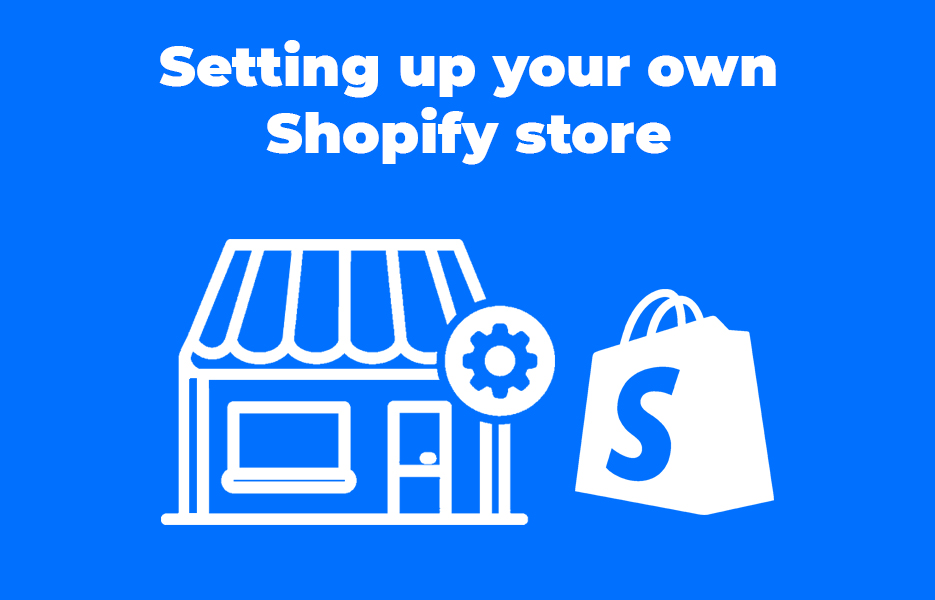
If our examples have triggered your creative juices and you fancy getting to work on your own Shopify store, then there are plenty of things you’ll want to think about. What will you sell? Who will your target customer be? What sort of strategies will you employ to reach your customers? Perfect planning prevents poor performance, as we all know – so getting your plan in place before you get started will help to ensure that you don’t miss a crucial step. We wrote about some examples of templates and tools you can use when you’re starting a business, or planning change in our post here.
Why is Shopify a good option for DropShippers?
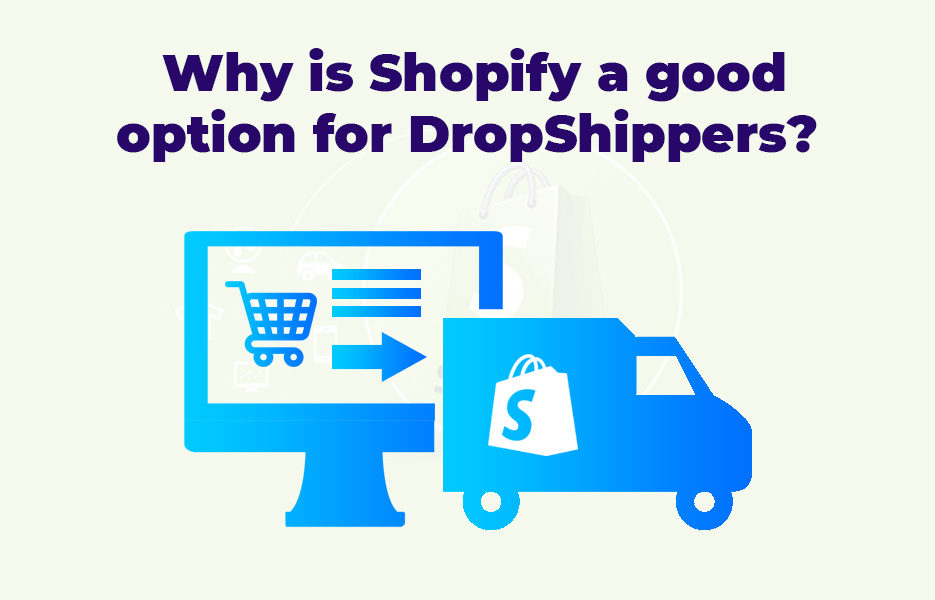
When you’re choosing website providers for your business, you need to know that your choice isn’t going to let you down. Of course, you don’t have to go with Shopify, but there are a number of reasons that Shopify is a good option for new sellers when they’re creating their online store – here are just a few of them!
The platform is tried and tested, and secure
Over a million stores have now been set up over the sixteen years that the platform has been available. Not only that, there has been over $100 billion (yes, BILLION) worth of sales that have been processed by the platform. They simply couldn’t have got to that kind of figure if their platform wasn’t secure and reliable, but if you want more evidence about Shopify’s PCI compliance (that’s the Payment Card Industry Data Security Standard (PCI DSS), just in case you’ve missed that acronym!) you can find it on this page.
The platform is simple to set up and manage
Some alternatives to Shopify need technical skills to set up, or you need to get a developer involved to get you set up and running. In some cases, you might want or need to edit code to make your store look different, but for the most part, you won’t need to. If you decide you do, Shopify have an in-house team of experts to help (for a fee, of course) you make any bespoke changes you need.
There are plenty of templates available
If you’re ready to start your business, you don’t want to hang around while you design your website. Get your store up and running using a template, and pick fonts and colours that suit your branding. Customers won’t realise, or care that you didn’t spend weeks on end creating code to make your store look great – they just know they want your products! Once your store is open and making sales, you can adjust your store design at your leisure.
There are loads of integrations for added functionality
The Shopify app store has plenty of apps that you can quickly and seamlessly add to your Shopify store to add extra features. So if you need help with managing your SEO, or your social media, you don’t have to figure out how – you just add the most suitable app for your needs. Shopify integrations are available from other parties as well too, so if you can’t find what you need on the Shopify app store, you’ll probably find what you need with a quick Google search.
The infrastructure is solid
Do you think the likes of Pepsi and Tesla would use Shopify if the infrastructure couldn’t cope with their requirements? Of course, they are likely to be on the Shopify Plus package, but even where businesses are on standard Shopify stores, the infrastructure is there to support you – Shopify simply wouldn’t have the success they do if it wasn’t a solid platform.
There are plenty of marketing tools
Shopify are all about helping you get your eCommerce store off the ground – and there are plenty of marketing tools to help you. They’re adding functionality to the platform, and developers are adding apps to the Shopify app store that can help you reach your customers easily all the time. Using these apps will help you to sell more, with less effort required.
Secure payments
Choosing a payment provider for your eCommerce website can be a real headache. Not with Shopify though. Shopify Pay is ready to go on your Shopify website, and if you use this, transactions won’t cost you additional fees. If Shopify Pay isn’t right for your business for whatever reason, then you can use another payment provider – there are several that are available on the Shopify app store, including Apple Pay, Google Pay and Amazon Pay.
Why might Shopify not suit some businesses?
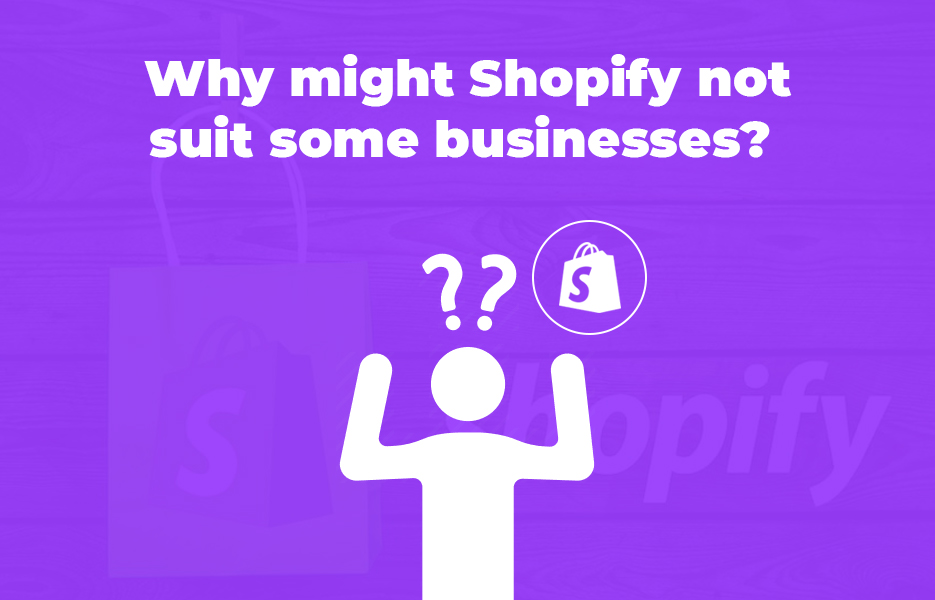
Shopify is a great option for many businesses, especially for sellers that are new to the world of eCommerce and selling online, but there are a few challenges that might add up to Shopify not being quite the right solution.
Customisation options are limited
Most of the Shopify store designs are based on templates – which in many cases, can be a good thing. However, it might not have the functionality to make your store look quite the way you want it to, without extensive development work. With that in mind, be sure to make the most of your trial period, so you know it is the right solution for your business.
Developers might find Shopify restrictive
For individuals who are happy playing around with code and configuring settings, Shopify might not be flexible enough. There are plenty of options that don’t have this issue, and since many of them are open source (and therefore free to use, unlike Shopify) they might be more suitable.
Variant listings can be problematic for Shopify users
If you’re selling many versions of the same product – for example, a t-shirt, but with different customisation options – then Shopify might not be the right solution for you. That’s because you only get to list three different types of variation options, so with our t-shirt example, you would be able to allow customers to choose from size, colour and sleeve length – but you wouldn’t be able to add on the option of adding a pocket. If you’re selling completely different items, Shopify might work for you but it’s a good idea to use that trial period to be certain.
Additional functionality usually costs you
Your Shopify subscription might only cost $29 per month if you’re on the Basic plan, but there is a lot of functionality that you won’t get without paying for extra. When you’re using that trial period, make sure your setup has everything you need – if you have to add on apps from the app store then you’re almost certainly going to need to pay extra.
Reporting isn’t included on the Basic plan
If you’re signed up for the Basic plan because you’re just starting out in eCommerce, you’ll almost certainly want reporting tools. But unless you’re on the $79 a month plan, you won’t have access to the professional reporting tools in Shopify. You’ll be able to use some of the apps in the Shopify app store, but they might not give you everything you need, and you’ll need to factor in the additional cost.
International sellers may find phone support lacking
Outside of the US, UK, Australia and New Zealand, there are reports that getting through to phone support from Shopify can be a challenge. We’re sure Shopify are on the case for this, but it’s something you need to be aware of.
If you don’t use Shopify Pay, transaction fees apply
It makes sense why Shopify want businesses to use their own payment gateway, but for some businesses, Shopify Pay just isn’t the right solution. Unfortunately, if you choose to use another payment gateway you’re going to be charged a transaction fee each time a customer makes a payment. That’s going to take a toll on your profits, so you need to be sure you’ve done all the sums to make sure Shopify is sustainable for you.
DropShipping with Shopify heavily focuses on AliExpress
We hear so many people who want to do DropShipping, but they struggle to fill their stores with products from AliExpress, or they encounter problems because the items are being sent from China and there are long delays with delivery. Those problems don’t have to be issues if you’re DropShipping from Avasam suppliers! If you want more information about the challenges of DropShipping with AliExpress, you can find that on this post.
What are the alternatives to Shopify?
As we say – there are plenty of reasons that Shopify might not be right for your business. If it isn’t right for you, then you’ll be looking for alternatives. The two main competitors for Shopify eCommerce stores are Magento and WooCommerce, but they’re not the only options.
If you’re looking for another system that makes setting up your store easy, then take a look at BigCommerce – subscription fees and functionality are similar, but unlike Shopify there are no transaction fees and you’ll get reporting options on all levels of plan. That’s a huge advantage when you’re starting a new business and counting every penny. Other hosted solutions include Kartrocket, Zencommerce and 3dcart – all of which are great options.
Open source options include WooCommerce, PrestaShop and OpenCart, osCommerce, nopCommerce, X-Cart and Zen Cart. Because they’re open source, they’re free to use, but there will be other costs, including hosting, and you might need developer skills or to employ a developer – which of course, would come at additional cost.
Like with Shopify, not all these solutions are going to be suitable for all businesses – so you’ll need to assess the options carefully and make the right choice for you. We’ve integrated each of the website providers we’ve mentioned here on the Avasam platform, so whichever on you decide is right for your business, you’ll be able to get your products easily onto your store.
Can I use Shopify with Avasam?
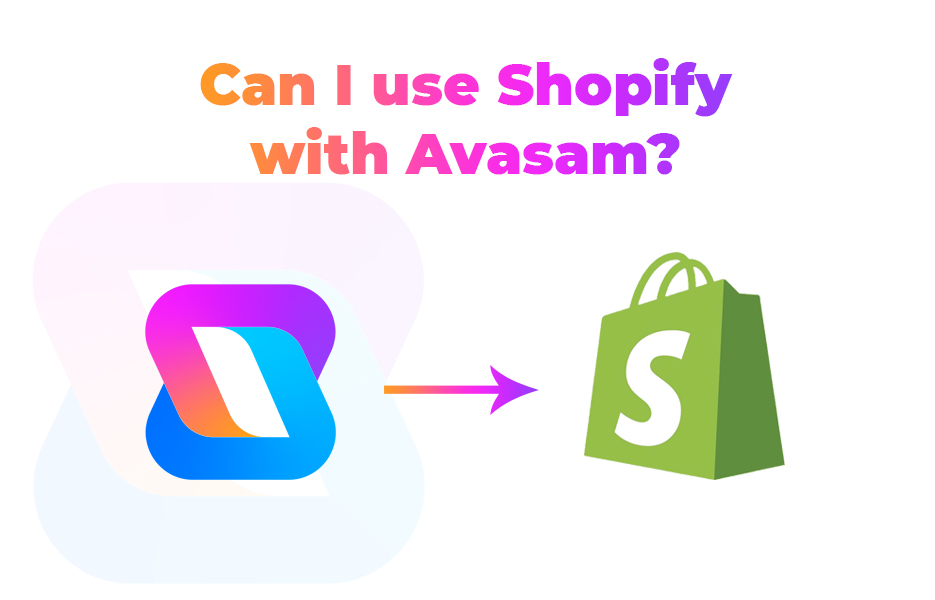
Absolutely! Like Shopify’s aim of making selling online simpler, when we started designing the platform we did so with the aim of making it easier for sellers to source and sell their products, but across multiple platforms rather than being tied to selling in just one place. We’ve integrated Shopify as a sales channel so that you can get the convenience of setting up a Shopify website with the benefits of Avasam, rather than having to rely on AliExpress – and not only that, you can sell across other sales channels too. If you want to get your products in front of customers on eBay and Amazon, it’s easy to do so with Avasam. You can integrate your Shopify store in your Avasam account, or you can add the app through the Shopify App Store. We’ve integrated with plenty of other marketplaces, so take a look at the options we’ve provided here.
Looking at other Shopify websites is a great way to find out what works and what strategies you can use for your business. We’ve looked at just a few on this post – because well, there are just so many to take your pick of looking at! We’ve made some suggestions throughout as to what you can take from each business, but here are our personal highlights:
- Great quality products and an appropriate price are just the start – you need on-point branding to be successful too
- Your social media channels and your content are a low cost, and yet highly effective way to reach your target customers
- You don’t have to have years of experience to start your own business
- Minimalist design is on-trend at the moment, but it doesn’t have to be boring
- Your store doesn’t need to be packed full of products – finding high quality products with a bigger profit margin can bring you as much success as if you add thousands of low cost, low margin products to your store.
If you’re ready to get started and fill your store – Shopify or otherwise – with outstanding products from suppliers in the UK and Europe, sign up for your free Avasam account today. You won’t pay us anything until you’re making more than 10 sales per month, after which our subscriptions increase gradually as your business grows – but you can close your account at any time. Simple, affordable and designed specifically to make your business a success. Got a question? Talk to us on live chat during business hours, or give us a call on +44 (0) 330 113 7788.
This post contains affiliate links. If you use these links to buy something, we may earn a commission. We only use referral links for businesses that we would use ourselves. Thanks for your support!

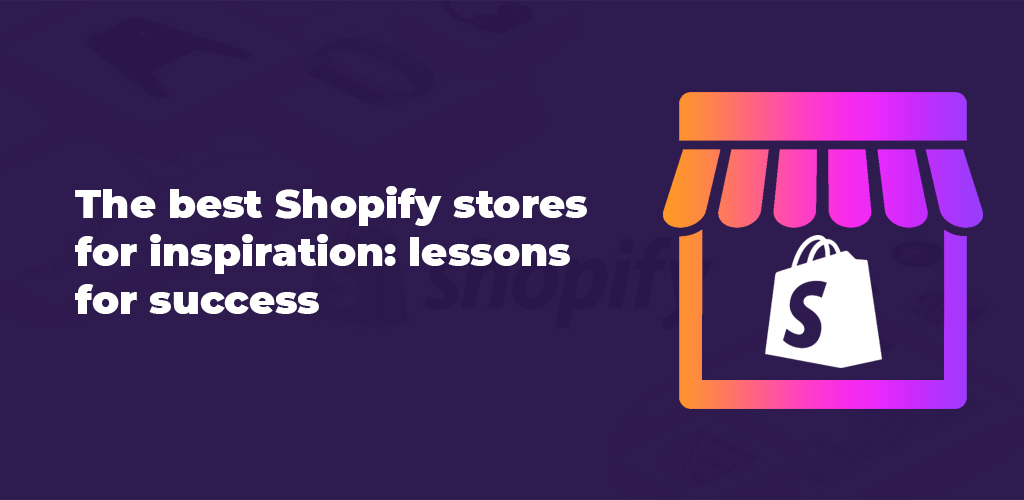


DropShip products from verified suppliers to diversify your inventory and scale your eCommerce business